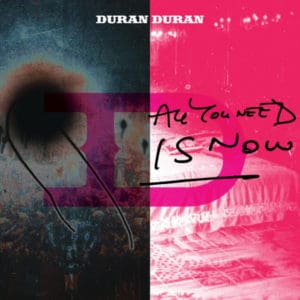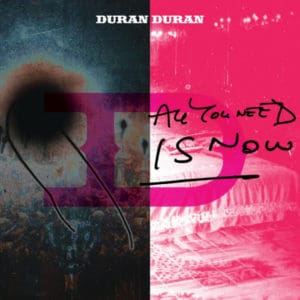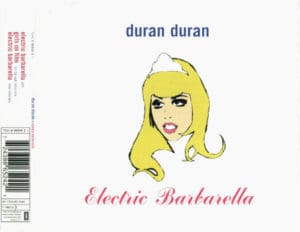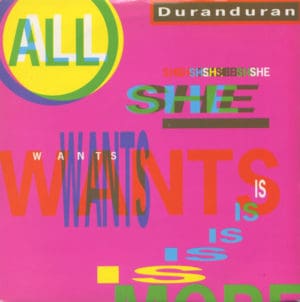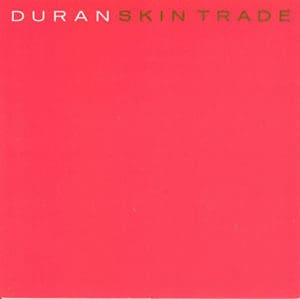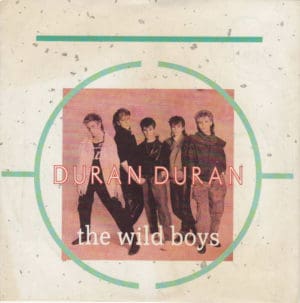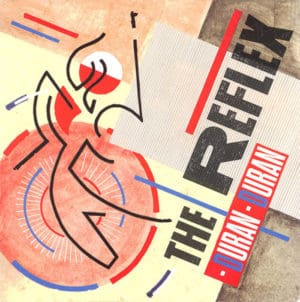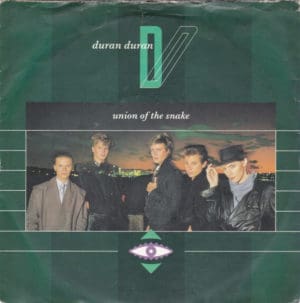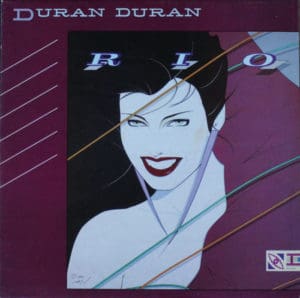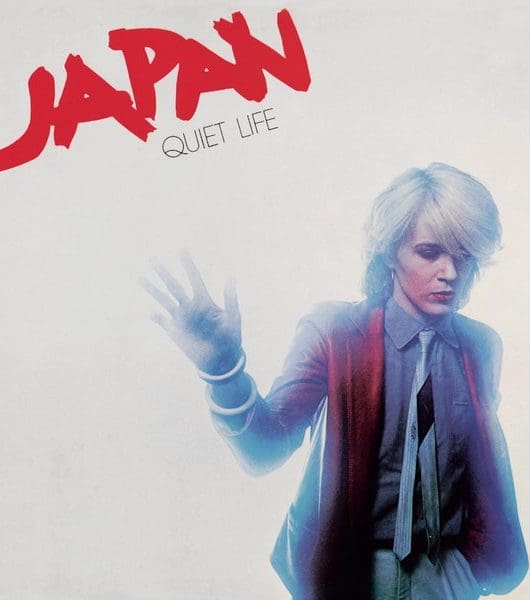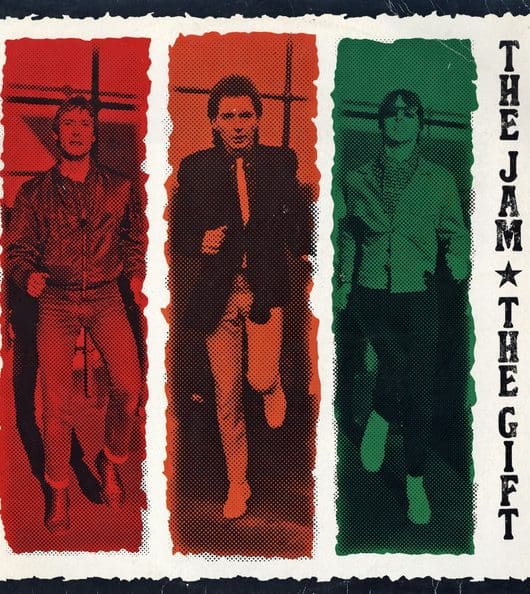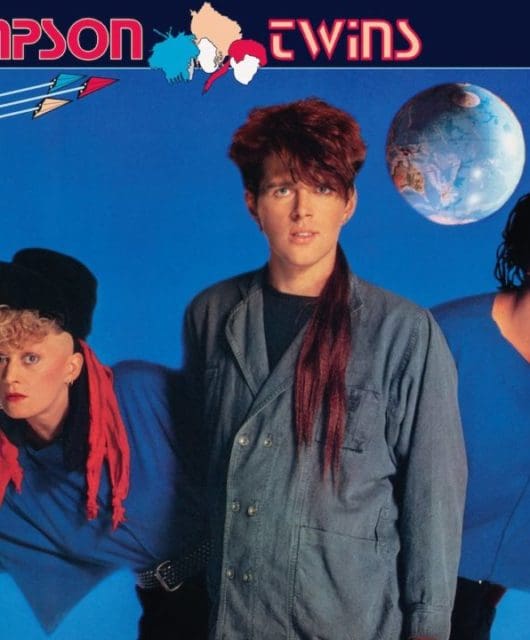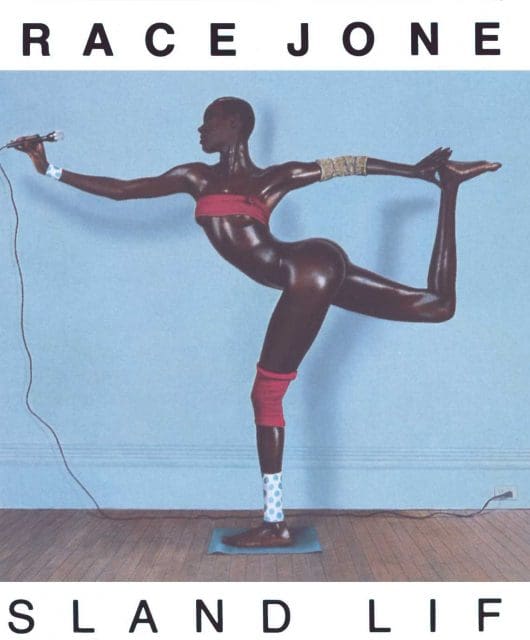40 of the best Duran Duran songs – year by year
By Rik Flynn | January 30, 2022
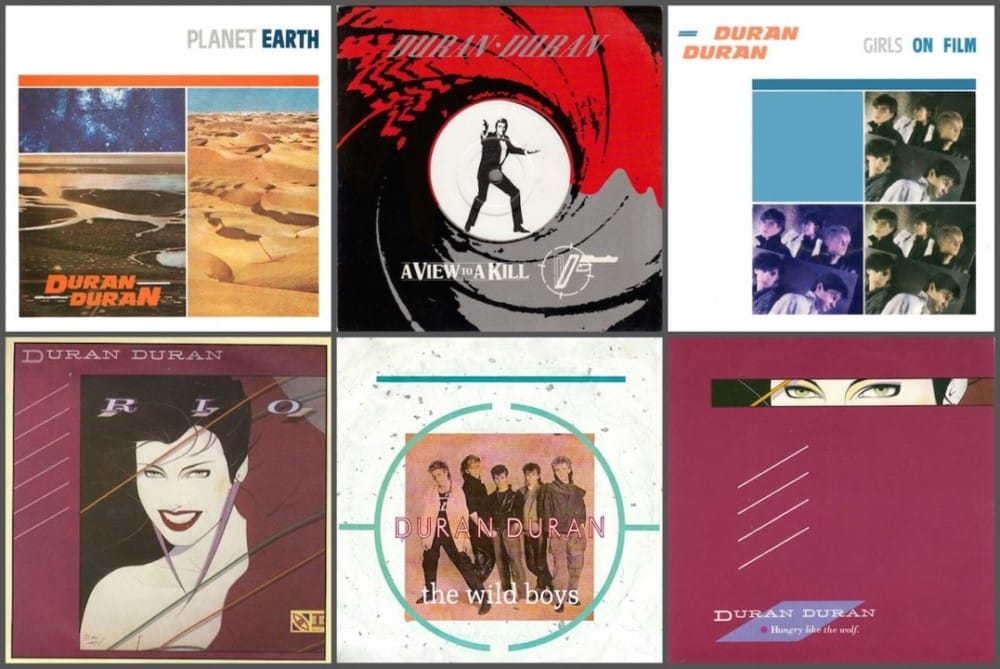
Our (chronological) rundown of the very best Duran Duran songs, from their 40-plus-year recording career (1981 – 2015)
In all honesty, this is a list that almost writes itself. Duran Duran are, after all, amongst the finest singles bands of their day. From within the grooves of 14 studio albums, containing just short of 40 for the most part magnificent singles, there’s a wide array of nailed-down perennials at our disposal.
And while most commentators would suggest the band’s early period – at the vanguard of both New Wave sounds and New Romantic style – as the outright pinnacle, we’d propose that there’s a range of lofty musical peaks dotted throughout their later career (and one later single, in particular, that outdoes them all).
Shining Pop
From shining pop classics that are impossible to ignore to moonlit treasures that are far subtler in their persuasion, there’s plenty here for most tastes in our Top 40 Duran Duran songs.
Beyond the album hits, there’s a singular chart-topping satellite single, album tracks revamped with cutting-edge producers (and then put through the Duran mould) and a few B-sides that were plainly as good as any of those carefully-selected album choices.
We’ve chosen to disallow both covers (skilfully circumnavigating the much-maligned Thank You LP) and side-projects to avoid any squabbling, and there’s a lengthy list of cuts that were reluctantly consigned to the ‘bubbling under’ category.
Survive & Thrive
Those that almost made the grade but deserve an honorary mention include luscious B-sides Faith In Colour and Like An Angel; the subtler end of Duran balladry in Too Late Marlene (Big Thing), Starting To Remember (Pop Trash) and Point Of No Return (Astronaut); as well as pop highpoints I Take The Dice (Seven And The Ragged Tiger) and Too Much Information (the ‘Wedding Album’).
A few moments from Rio are also absent (well, we couldn’t include them all), and newer fare such as Face For Today and Paper Gods also just missed the boat.
Nonetheless, this chronological list encapsulates a body of work that – despite the ever-changing line-ups – shows a band that survived and thrived thanks to that rare ability to adapt, and with unabated confidence.
Fab Five
At times they could do no wrong; at times the critics bayed for blood and at times fans were left scratching their heads, but storms were ridden and dog days overcome.
In our mind’s eye, a reunited Fab Five are, at present, toasting these past 40 years on the deck of a luxury yacht moored in some far-flung paradise (awaiting their copy of Classic Pop). Fantasy it may be, and while those days of rude excess are all but consigned to history, it’s our vision, and we’re holding on to it.
Stubborn, ostentatious, experimental and above all very, very talented, Duran Duran will no doubt surprise us once more when the next project comes around.
Top 40 Duran Duran songs
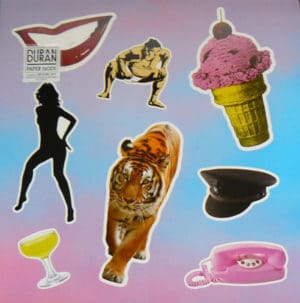
40 Sunset Garage, 2015
By far the chirpiest offering from Paper Gods, and likely the most outright example of carefree ‘pop’ ever made by the band. It shows their urge to constantly evolve their sound, plus their joy at still being appreciated (“How did we get so far?/ Whatever happens, we’re OK”). Mr Hudson may well be the source of the sunny vibes – for Le Bon, he “glued it all together”. Beaming melodies and meandering guitars expand into a blissed-out middle eight, before we return to the celebrations – and it’s feel-good perfection.
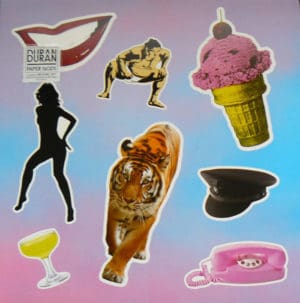
39 You Kill Me With Silence, 2015
Produced with, conceived by, and featuring Mr Hudson, this wrong-footed the faithful with its modish trap rhythm, but it was clear Duran Duran 2.0 were very much in effect. It had their boldest intro to date, a dirty bass, undulating atmospherics and a skyward melody that showcased the scope of Le Bon’s voice. The latest rebirth was complete and this song helped Paper Gods to No.10 in the Billboard charts, their highest spot in 22 years. Note the lyrical reference to Bowie (“To drive another lad insane”).
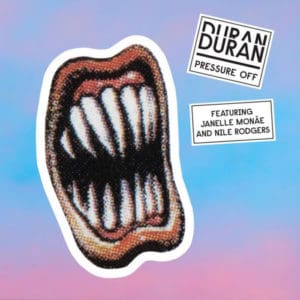
38 Pressure Off, 2015
Co-written by the entire cast that appears on it, the lead single from Paper Gods set out the stall for an unusually collaborative new era. Mark Ronson, Mr Hudson and Nile Rodgers all chipped in, while Janelle Monae was given the rare honour of sharing the mic. The result? A roof-raising chorus that’s overwhelmingly ‘up’. Meanwhile, Rodgers’ fizzing Strat brought the funk, a touch of Bowie-esque nostalgia came from Nick’s pitch-bent synth, and John offered up a bassline that had his fingers “in shreds”.
Read more: Duran Duran interview (2021)
37 Before The Rain, 2010
Yet more evidence that the Ronson-Duran match up was a favourable one, this heralded the return of the Fairlight, a machine integral to early successes. Le Bon’s bitter tale of a man surrounded by “ghosts of guilt” bearing the burden of “murdered secrets” held a direct link to the past, too. “It was very much like The Chauffeur,” remembered Roger. “Simon already had that song before he joined the band, so it was quite eerie… because it was almost like the same thing was happening 30 years later.”
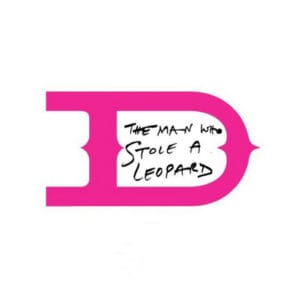
36 The Man Who Stole A Leopard, 2010
Another grandiose highlight from All You Need Is Now, this was, for many, the crowning connection between band and producer. Inspired by Sixties crime thriller The Collector and with an intro that harks back to Rio’s minimal sonic palette, it slowly opens out into a stormy epic. Owen Pallett’s cinematic score and Nick Rhodes’ textured synths provided the backdrop, while an archetypal Le Bon melody provided the focus – ably supported by R&B soulstress Kelis.
Read more: John Taylor interviews Duran Duran guitarist Dom Brown
35 Being Followed, 2010
One of the superior songs from All You Need Is Now, with a surf guitar motif described by Nick as “pure Bond”. “It’s one of my favourite tracks on the album,” he explained to Stereogum. “It’s like an Eastern European spy song… but actually all about surveillance.” Mark Ronson held it in high regard, too, choosing to debut this specific ‘Return to Rio’ on his East Village Radio prior to the album’s release. Their best song for some time, on their best album for some time.

34 Girl Panic!, 2010
Having established the follies of chasing the zeitgeist with Red Carpet Massacre, All You Need Is Now was a welcome return to the blueprint. Thank heavens for Mark Ronson, who suggested an imaginary follow-up to Rio. Nick dusted off his analogue synths, John re-installed Rio-esque basslines, and stand-in Dom Brown emulated the Chic-meets-Pistols aesthetic. Jonas Åkerlund’s video dutifully followed suit, reuniting the original 90s supermodels.
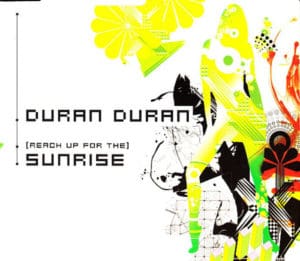
33 (Reach Up For The) Sunrise, 2004
The Astronaut album was the first followers had heard from the Fab Five since 1985’s villainous masterpiece A View To A Kill. With Epic onboard, Sunrise was the reawakening everyone had hoped for. “We were listening to a lot of Ibiza-style dance music,” said John Taylor. “Sunrise was definitely a conscious attempt to re-style the Duran aesthetic to fit into that contemporary European dance mould.” Both single and album went Top 10. Duran Duran were back!
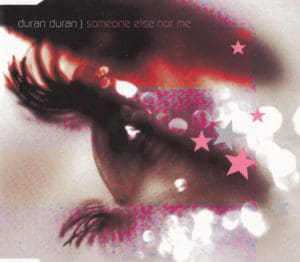
32 Someone Else Not Me, 2000
Pop Trash may have split fans in half, but the band’s first collection of the new millennium held pockets of genius. Yes, it was a little overproduced, but this simple lovelorn ballad rested somewhere between Strawberry Fields psychedelia and Siamese Dream-era Smashing Pumpkins. While Italy and Latvia were the only territories that got it, it’s the track that helped John Taylor decide he wanted back in, calling it “crazy beautiful”. B-side Starting To Remember is astonishing.
Read more: Making Duran Duran’s Notorious
31 Electric Barbarella, 1999
This glittering piece of pop electronica foresaw the trash TV fetish surrounding lifelike robotic sex toys, while musically it aligned more with Nick and Warren’s side-project, TV Mania. This first single from Medazzaland appeared in worrying times, with the covers album Thank You widely ridiculed and John Taylor turning on his heel midway through recording. The song maintained a stubborn flicker of greatness, and was claimed as the first legal download.
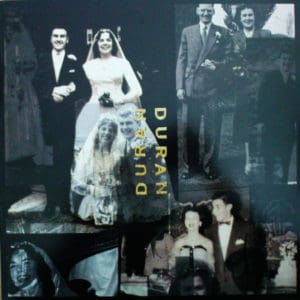
30 Shelter, 1993
One of the band’s most underrated tracks, Shelter announces itself via the trademark sampled stabs mined from past glories, apposing vocals that clash and blend like the tides of a turbulent sea – and the usual killer bass from John Taylor. With spirits at their lowest ebb, the group retreated to Warren Cuccurullo’s London studio to record a batch of demos that would form the backbone of ‘The Wedding Album’, including this neglected gem (available on the unofficial Warren & Nick’s House Demos album).
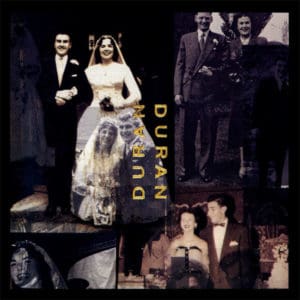
29 Love Voodoo, 1993
“It’s a twisted love story,” Rhodes told Stereogum. “At the time we wrote it, we thought we were onto something – it’s a killer chorus.” The female vocal comes from Lamya, one of the singers of Soul II Soul. After Liberty misfired, the line-up slimmed down: out went drummer Sterling Campbell, in came drum machines and a fresh outlook. “The Eighties had ended and a lot of people wanted to lock the door, and close Duran Duran in that decade,” said Rhodes. “We went back to basics and wrote and wrote, day after day.”
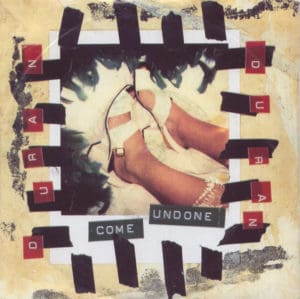
28 Come Undone, 1993
Duran Duran had dropped off-radar before Ordinary World and this brooding classic heralded a fresh purple patch. The song evolved from Cuccurullo’s heavily-flanged riff, originally intended for a side-project with Bush singer Gavin Rossdale. The addition of a drum loop from The Soul Searchers’ Ashley’s Roachclip was inspired, while session star Tessa Niles delivered a perfect vocal counterpoint. Despite the seemingly morose imagery, Le Bon wrote the lyrics for his wife as a birthday present.
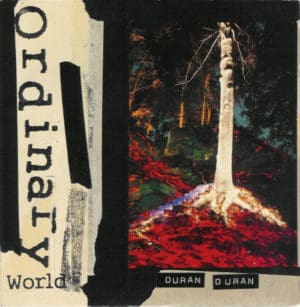
27 Ordinary World, 1993
This epic ballad introduced a bold new chapter as the initial transmission from ’The Wedding Album’. The lyrics found Le Bon at the height of his powers. “We’re surrounded by the desire for the super ordinary – super man, super life, video game explosion,” he told VH1. “I wanted to say that the ordinary world is actually the most beautiful thing.” The world agreed and a US No.1 spot beckoned, as did a mismatched duet with Pavarotti, who belted it out with Simon in Modena with full orchestral backing.
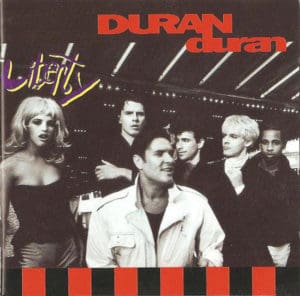
26 My Antarctica, 1990
The Durans know how to nail a good ballad, and this is Liberty’s other clear frontrunner. While the group were far from happy with the album, Le Bon commented that it birthed “two of the best songs Duran’s ever come up with”. A hypnotic piano hook cuts through the ambience, while shimmering guitar ensured My Antarctica a place in band history. “As a song it’s exquisite,” Rhodes said. “Warren played some incredibly beautiful ambient reversed guitars on it. He’s really like a magician, as well as a musician.”
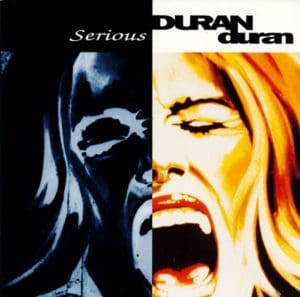
25 Serious, 1990
Commandeering the soulful inflections of George Michael at his best and with guitar lines plucked straight from the Johnny Marr songbook, Liberty’s second offering chose an uncharted route of attack. The decision not to tour in support of the album and any lack of real marketing meant that, despite Liberty’s initial Top 10 placing, it was quickly lost to the ether – and with it went this sparkling piece of sophisti-pop. Serious managed a paltry UK No.48, and any further Liberty singles were called off by EMI.
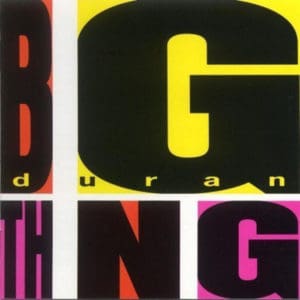
24 Palomino, 1988
For Big Thing, the boys bid adieu to the funk-pop of Notorious and fixed their sights on a harder-edged sound. On an album inhabited by the hi-energy pop-rock of Too Much Information (with eyes on the stadium) and the heavily-sequenced All She Wants Is (with eyes on the club), this ballad was a restorative oddity; Palomino bathes in soft, ethereal synths before a stunning chorus surfaces through the panorama. Le Bon took inspiration from Picasso and, with John as his co-writer, fashioned this hidden gem.
Duran Duran: Making The Wedding Album
Enjoying our feature on the Top 40 Duran Duran songs? Then read our feature on Duran’s cover art
23 All She Wants Is, 1988
Beginning with the title chanted over sequenced hi-hats, this anomalous second satellite from Big Thing found Duran deviating into Krautrock-influenced territories. Live bass was exchanged for a glossy, Numan-esque low-end pulse, while Warren’s ‘lead vamp guitar’ circled dreamily around the whole affair. Its original working title of Sex perhaps explains the erotic leanings of the lyrics (and the moans over the outro), while the stop-motion video also contained plenty more sexual imagery.
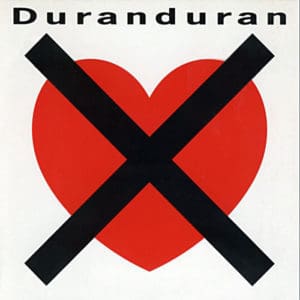
22 I Don’t Want Your Love, 1988
Big Thing’s biggest hit, I Don’t Want Your Love married airy funk with stuttering electronica. A case of writer’s block for Le Bon left Nick Rhodes to pick up the slack lyrically, while new guitarist Warren Cuccurullo sparred with sessioneer Chester Kamen’s “noise guitar”. Another hired gun – ex-Average White Band drummer Steve Ferrone – took up live duties, and a single mix from Shep Pettibone did the rest. The album’s pacemaker lit up the charts – UK No.14, US No.4, and No.1 in Italy. Eccellente!
Making Duran Duran’s first album
21 Skin Trade, 1987
Simon, Nick and John felt this Prince-inspired funk-fest would further prove that three was as strong as five, but it fell short of their expectations. Taking its title from Dylan Thomas’ unfinished book Adventures In The Skin Trade, the track married syncopated guitar and Purple Rain synths with The Borneo Horns liberally peppered throughout, while Le Bon’s newfound falsetto prowled across this rhythmic plateau to understated yet potent effect. It clawed its way to No.22 in the UK… a major flop in Duran terms.
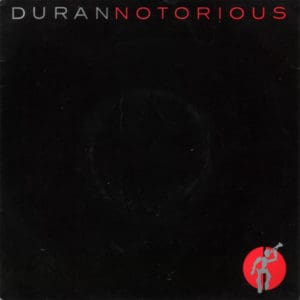
20 Notorious, 1986
Dubbed “the survival song” by the band, Notorious announced a new phase of their career. With the caustic circumstances surrounding Andy’s departure and a burnt-out Roger also out, things could have gone south. Instead, this stoic riposte not only weathered the storm – while supposedly poking fun at Taylor (“Who really gives a damn for a flaky bandit”) – but also helped the three-piece emerge triumphant. Exposing their funkier influences with ‘The Hitmaker’ Nile Rodgers at the helm was a masterstroke.
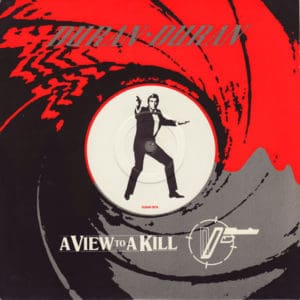
19 A View To A Kill, 1985
James Bond fanatic John Taylor scored the commission after a drunken encounter with producer ‘Cubby’ Broccoli, who installed the five-piece in the studio with composer John Barry. Personality clashes meant problems, but the showdown between Barry’s traditional approach and the band’s modern thinking made it work. “We wanted to give it something very contemporary and very Duran Duran,” Taylor said. “We didn’t really think about what we had to follow.” It’s the only Bond theme to ever score a US No.1.
Read more: Duran Duran – the side projects
18 The Wild Boys, 1984
Written for Russell Mulcahy’s film adaptation of William Burroughs’ novel The Wild Boys: A Book Of The Dead, this took on a life of its own when that project fell through. Nile Rodgers was armed with a brief to concoct an “extreme drum sound”, so he gathered raw audio and samples to put through his futuristic new Synclavier sampler. Thanks to Mulcahy, the band inherited a wealth of ideas to use in the ambitious video. The sole studio track on the Arena live album, it made No.2 on both sides of the pond.
Read more: Top 20 Blondie songs
Read more: Top 20 Reunion Albums
17 The Reflex, 1984
The Reflex blended club-bound rhythm, jagged chords, errant (slightly out-of-tune) steel drum synth sounds and Raphael Dejesus’ percussive genius with a disorientating narrative that even Simon Le Bon didn’t understand. The label wasn’t convinced, but Nile Rodgers’ pioneering revamp brought the whole thing to fruition. “It blew my barn doors off,” Le Bon told Billboard. The single snatched the UK No.1 from Lionel Ritchie (Hello), and toppled Cyndi Lauper (Time After Time) for the US crown.
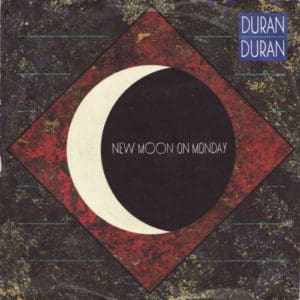
16 New Moon On Monday, 1984
Following its serpentine cousin into the Top 10 on both sides of the Atlantic, this oft-overlooked single is a top pick with devotees. Bowie’s influence is clear in its China Girl-aping verse, but the chorus with its portrait of dancing fire and lonely satellites is most certainly Duran Duran. John Taylor called it a “much more subtle seduction” than their previous material. Do track down the filmic 17-minute ‘movie version’, Ian Little’s Dance Mix, and our pick – Chicago producer Peter Beyer’s groovesome Catbirdman version.
Duran Duran: Making Seven And The Ragged Tiger
Enjoying our feature on the Top 40 Duran Duran songs? Read our feature on the making of Rio
15 Secret Oktober, 1983
In amongst the stadium-friendly hits, this slender, atmospheric ballad creeps into the consciousness via more subtle means. Inexplicably, it never made it onto Seven And The Ragged Tiger, becoming the flipside to Union Of The Snake. Imagery of fireworks, speeding trains and distant thunder combine with circuitous synth and a constant bubbling sequence, while spoken word dips in and out, like Le Bon’s shadowy second self. Played over the end credits of the Sing Blue Silver documentary, this has become a fan favourite.
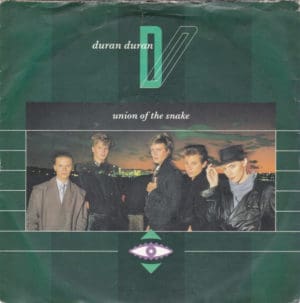
14 Union Of The Snake, 1983
Sessions for Seven And The Ragged Tiger – an album conceived in the Côte D’Azur and cut on Montserrat – were marked by round-the-clock debauchery (including “getting blasted on Martinis” with Elton John in Cannes). This lead single emerged from the chaos thanks to Nick’s state-of-the-art Fairlight synth and his toying with its “outer limits”. Le Bon has been tight-lipped about the lyrics, offering only that they were inspired by Jim Morrison and tantric sex – but who cares when it has a sax solo as glorious as this?
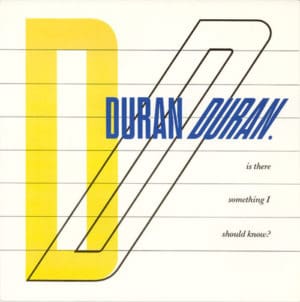
13 Is There Something I Should Know?, 1983
It took a more minimalistic approach to grab the UK top spot. Nick Rhodes had helped Kajagoogoo to No.1 with Too Shy from the other side of the desk, and it’s likely that this was designed to equal it. With The Beatles’ Please Please Me as a starting point, the song came to life in speedy time. “It was our fastest-selling record and probably also the quickest to write,” wrote Andy Taylor, “it felt as if it only took about 10 minutes.” The track has since been played on Mars by the Mars Rover.
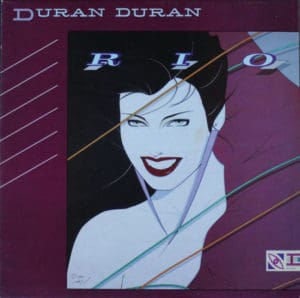
12 The Chauffeur, 1982
Simon’s 1978 poem about a driver’s obsession with his passenger won him his place at his Duran audition. “It was an important stepping block,” said Nick Rhodes. “It was the first completely electronic thing we’d done, and it’s turned into this sort of strange cult [hit].” There have been covers by Deftones, Sneaker Pimps and LA’s Warpaint, who cut it for the 2014 Duran tribute Making Patterns Rhyme. The song features Le Bon on ocarina, samples from an entomology documentary, and synth from John Mulligan of Fashion.
Read more: Duran Duran Superfan
11 New Religion, 1982
The big singles were the pillars that made Rio a classic of the era, but tracks like this ghostly epic grew steadily in stature once the lustre of the main events had worn off. Funereal synths give way to a pulsing groove, enclosing John’s slap-heavy bassline, while Andy’s slanted hook is up there with his finest and Le Bon weaves his characters into a hypnotic altercation via rhythmic swaps from rap-like staccato to a drawn-out drawl. Seek out the 1981 Manchester Square demo for a window into the band’s writing process.
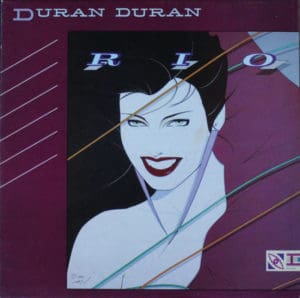
10 Hold Back The Rain, 1982
Rio’s grandiose fifth track runs deep, and while we’re sure it had Princess Di singing into her hairbrush, its tone was murkier than most. Behind it lay Simon’s heartfelt plea to John; he was “staying out too late, taking too many drugs, drinking too much, going home with the wrong kinds of people,” Le Bon explained to VH1. Hedonistic cul-de-sacs aside, Taylor’s propellant bassline was integral to the track. In 2001, the song was played on Space Shuttle Atlantis as it prepared to land at Cape Canaveral.
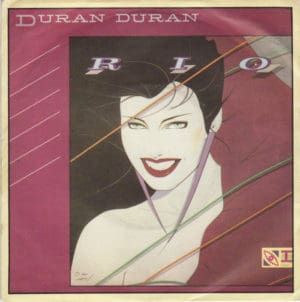
9 Rio, 1982
The eye-wateringly decadent yacht video somehow defined the 80s (and the band), but none of that overblown escapism matters a jot. Rio’s verses were adapted from early track See Me Repeat Me, while the chorus took inspiration from Birmingham peers TV Eye. The end result is an effervescent clash of arpeggiated synth, rhythm-clinging guitar stabs and an intricate, wandering bassline inspired by Sly and the Family Stone. Add in Le Bon’s dynamic lead and lyrics, and it’s one killer calling-card.
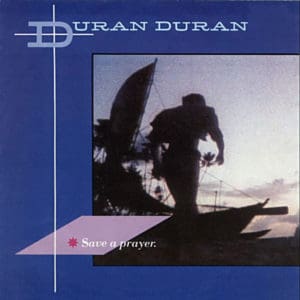
8 Save A Prayer, 1982
The third, most sophisticated single from Rio was a masterstroke of cool – and the first ballad they’d unleashed. With the fuzzy mise-en-scène of a fleeting dalliance and another MTV-friendly video, it was a surefire hit, only denied the UK summit by the imperishable Eye Of The Tiger (we’ll forgive them that one). The song was released by Eagles Of Death Metal in memory of the victims of the Paris terrorist attack in 2015. Duran Duran donated all the royalties they gained from the cover to the campaign.
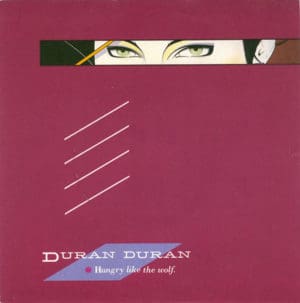
7 Hungry Like The Wolf, 1982
The first US hit shows the rocky intentions of a band in the throes of a world takeover. Conceived by Le Bon and Rhodes at EMI’s demo studio with the use of cutting-edge tech (supposedly while suffering hangovers), it was finished in record time – or, as John Taylor surmised, “it was probably written by cocktail hour”. Simon’s Red Riding Hood-inspired narrative traces the guitar motif, a Jupiter-8 synth orbits its popcorn arpeggio, and Simmons and Roland 808 drum machines underpin an animalistic groove.
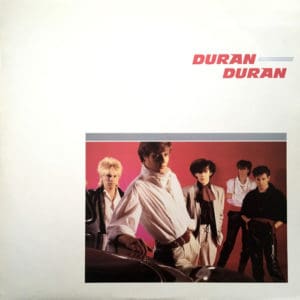
6 Anyone Out There, 1981
More evidence of Duran’s early prowess, from a revolving buffered guitar riff to soft, swirling synths and the Bowie-aping slap bass that plays out the track. This ode to lost love and loneliness conjoining Roxy Music, Japan and Chic, was first aired at the band’s inaugural Birmingham show and would appear on their debut album. Beyond the eye shadow and billowing shirts synonymous with New Romanticism lay something far more special. It made Nile Rodgers’ playlist of his favourite Duran tracks.
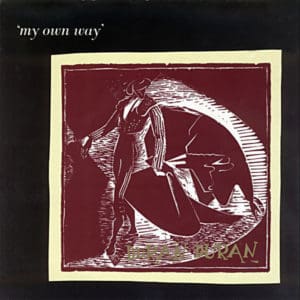
5 My Own Way, 1981
A simple, brilliant coalescence from the flawless Rio album. This slower-paced version is the most natural; the Carnival mix adds weight to the rhythm, but why the band ramped up the tempo so much for the single remix is beyond us… and the formulaic disco strings stripped the song of any semblance of cool. The band seem to agree: it’s absent from all compilations and is never performed live. Still, the incendiary Night Version (on the UK 12”) goes some way to repairing the damage.
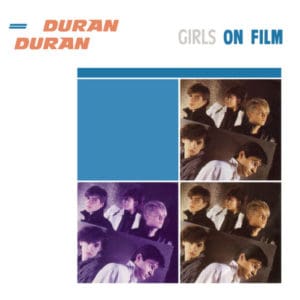
4 Girls On Film, 1981
It’s viewed as the track that helped secure stratospheric fame, but Girls On Film was fashioned earlier in the band’s history, and the original demo (made with ex-singer Andy Wickett) has recently surfaced. While that gritty post-punk jam displays the band’s innards, the later reboot shows Le Bon in career-best form. The notorious Godley & Creme video might suggest otherwise, but behind the sexual imagery lie lyrics that call out the fashion industry for exploitation of women. An MTV staple, it made UK No.5.
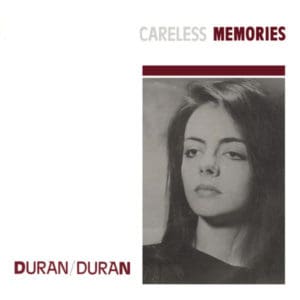
3 Careless Memories, 1981
Fresh from the Rum Runner’s New Year’s Eve party, the band were thrust sleep-deprived into the studio to complete their LP. According to John Taylor’s memoir, it was EMI big-wigs that chose this feral dispatch as Planet Earth’s successor. Sadly, where their debut cut through, its angsty twin faltered, and was soon forgotten outside of fan circles. While for many B-side Khanada was better, this menacing cult favourite borrowed the best bits from The Cure’s Boys Don’t Cry album and ran with them.
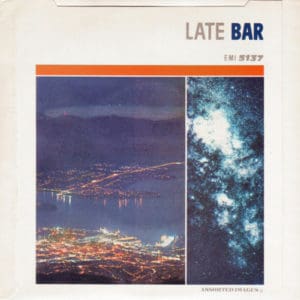
2 Late Bar, 1981
Written about their roots as underground braves of the Brummie scene, this holds the zeal of a band feeling for their sound. The now-familiar ingredients are all in evidence: tight, pulsing funk patterns from John and Roger, Andy’s manic riffing, voluminous keys from Nick, and a shadowy, goth-tinged bellow from Simon. Partitioned away from the album as the B-side to Planet Earth, Late Bar made for an essential 7”. As EMI A&R man Dave Ambrose said: “This was going to be a very, very important band.”
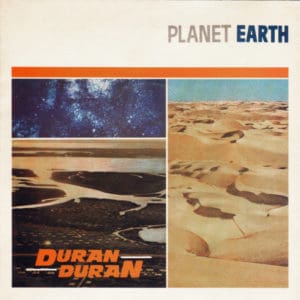
1 Planet Earth, 1981
This sci-fi-loving debut announced a band transmitting miles away from Terra Firma. Commandeering a headline (about Spandau Ballet) entitled “Here Come The New Romantics”, Planet Earth installed the five-piece as white-hot poster boys for the movement. After EMI won the bidding war, Birmingham’s high hopes went direct from tourbus to studio. Colin Thurston came in to man the controls off the back of successes with Bowie and The Human League, and a Blitz club classic – and a UK No.12 – was born.
For more info on Duran Duran check out their official website here
Read our feature on Duran’s 1990 album Liberty

